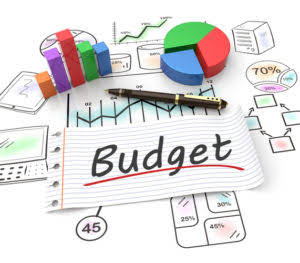If the percentages elected by each of you do not total 100%, 50% will be allocated to each of you. PepsiCo Inc. lists land, buildings and improvement, machinery and equipment (including fleet and software), and construction-in-progress under its PP&E account. The average https://www.bookstime.com/ useful life for straight-line depreciation for buildings and improvement is years and 5-15 years for machinery and equipment. In the fiscal year 2021, the company recorded $2.48 billion in depreciated expenses and had $24.42 billion in accumulated depreciation.

Definition and Examples of Depreciation
You can account for uses that can be considered part of a single use, such as a round trip or uninterrupted business use, by a single record. For example, you can account for the use of a truck to make deliveries at several locations that begin and end at the business premises and can include a stop at the business in between deliveries by a single record of miles driven. You can account for the use of a passenger automobile by a salesperson for a business trip away from home over a period of time by a single record of miles traveled.
Special Considerations
Whether the use of listed property is a condition of employment depends on all the facts and circumstances. The use of property must be required for the employee to perform duties properly. The employer need not explicitly require the employee to use the property. A mere statement by the employer that the use of the property is a condition of employment is not sufficient. If at least 25% of the total use of any aircraft during the tax year is for a qualified business use, the leasing or compensatory use of the aircraft by a 5% owner or related person is treated as a qualified business use. For information on listed property placed in service after 1986, see Pub.
- You may not be able to use MACRS for property you acquired and placed in service after 1986 if any of the situations described below apply.
- If someone else uses your automobile, do not treat that use as business use unless one of the following conditions applies.
- Depreciation is the process of allocating and claiming a tangible asset’s cost each financial year that is spread over its predicted economic life.
- The fastest way to receive a tax refund is to combine direct deposit and IRS e-file.
- For 18-year property placed in service before June 23, 1984, use a full-month convention on a disposition.
What property is depreciable?
- Depreciation is an annual tax deduction that allows small businesses to recover the cost or other basis of certain property over the time they use the property.
- It also rules out any asset that might be expected to remain serviceable forever.
- The participations and residuals must relate to income to be derived from the property before the end of the 10th tax year after the property is placed in service.
- In 1985 through 1994, your ACRS deductions were 9%, 8%, 8%, 7%, 6%, 6%, 5%, 5%, and 5% × $100,000.
- You use the remaining cost of the property to figure a regular MACRS depreciation deduction for your property for 2023 and later years.
- In addition to being a partner in Beech Partnership, Dean is also a partner in Cedar Partnership, which allocated to Dean a $30,000 section 179 deduction and $35,000 of its taxable income from the active conduct of its business.
- You must know the adjusted basis of the property and its salvage value.
Depreciation allows businesses to spread the cost of physical assets over a period of time, which can have advantages from both an accounting and tax perspective. Businesses also have a variety of depreciation methods to choose from, allowing them to pick the one that works best for their purposes. You are a sole proprietor and calendar year taxpayer who operates an interior decorating business out of your home. You use your automobile for local business visits to the homes or offices of clients, for meetings with suppliers and subcontractors, and to pick up and deliver items to clients.
- This applied regardless of when in the tax year you placed the property in service.
- Depreciable property is any asset that is eligible for tax and accounting purposes to book depreciation in accordance with the Internal Revenue Service’s (IRS) rules.
- At that time, Sue began to advertise it for rent in the local newspaper.
- You use an item of listed property 50% of the time to manage your investments.
- A quarter of a full 12-month tax year is a period of 3 months.

You do not use the item of listed property predominantly for qualified business use. Therefore, you cannot elect a section 179 deduction or claim a special depreciation allowance for the item of listed property. You must depreciate it using the straight line method over the ADS recovery period.
What Are the Different Ways to Calculate Depreciation?
Other types of property that cannot be depreciated include equipment used for capital improvements and section 197 intangibles. The key factor here is that depreciation is limited to property depreciable assets that will lose its value over time. An asset isn’t depreciable if it can conceivably gain in value. This would include certain collectibles and investments such as stocks and bonds.